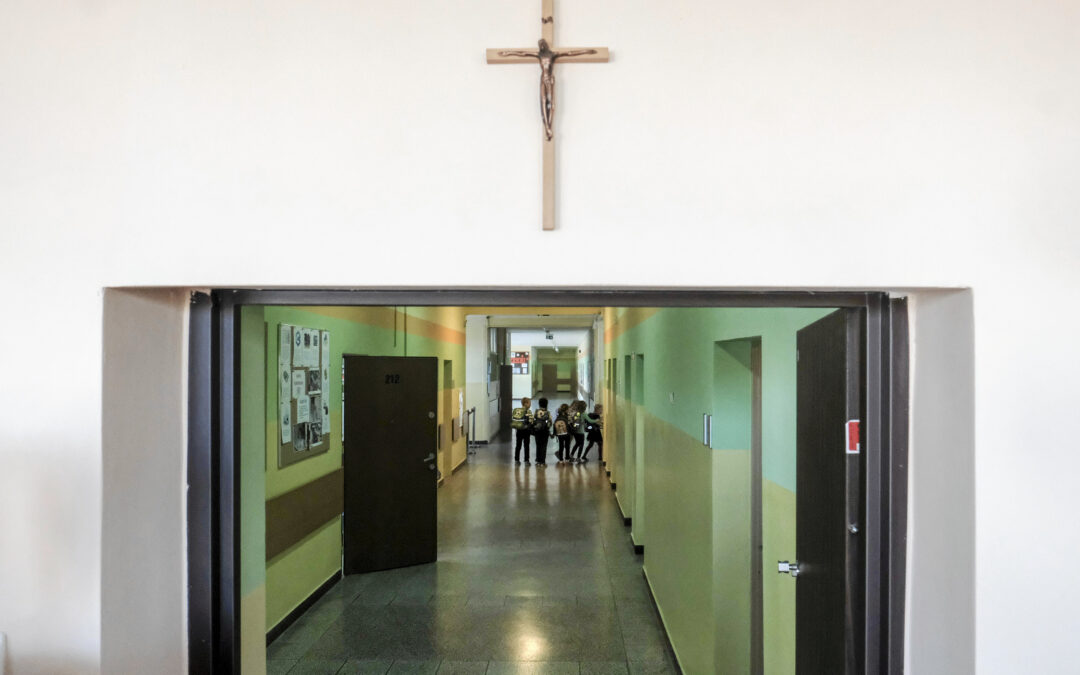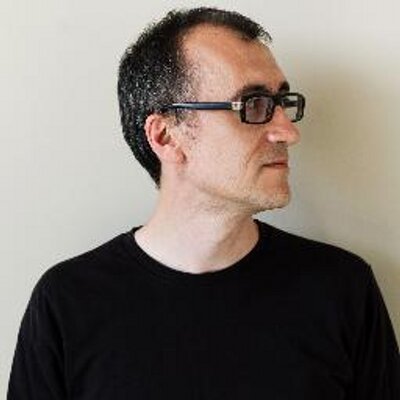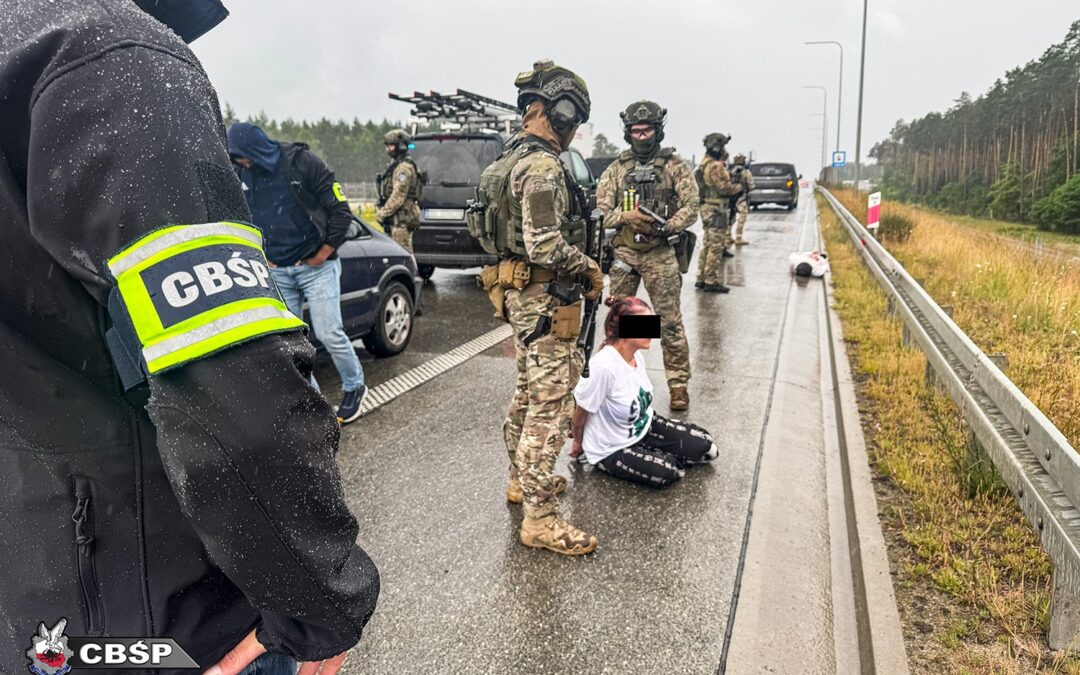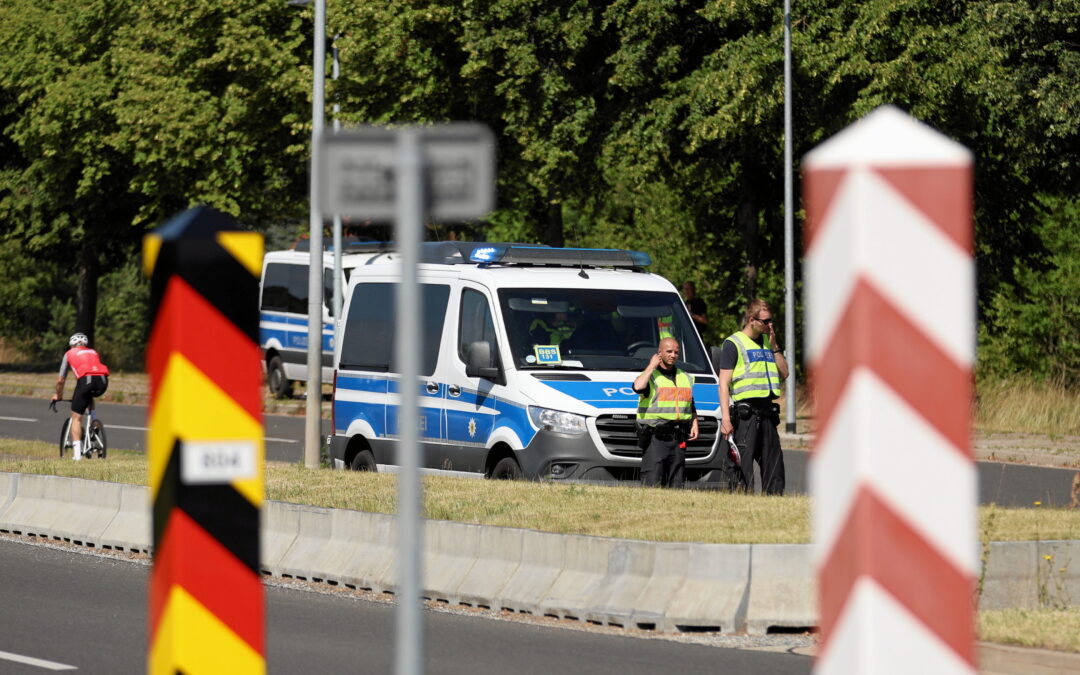By Wojciech Kość
As a growing number of Poles question the role and influence of the church, ever fewer parents are signing their children up for Catholic catechism classes in schools – and many are asking whether public institutions should be financing and hosting such lessons in the first place.
This school year marks the 30th anniversary of Poland introducing the subject of “religion” into the education system. Yet, whereas in many countries such lessons see children learning about a variety of religions, in Poland the classes consist largely of Catholic catechism, with curriculums and teachers (often priests or nuns) chosen by the church.
The decision was made by Poland’s first post-communist government in 1990 amidst very little discussion or debate. The Catholic church and its backers would reply to critics that it was an act of historical justice, a “thank you” for the church’s role in standing up to communism as well as a reflection of Poland’s overwhelmingly Catholic population.
For much of the three decades since, such arguments were widely accepted. Up until 2010, regular polling by CBOS showed that 60-70% of Poles regarded the Catholic church positively, and under 30% negatively.
“There was that conviction in the 1990s and 2000s that Polish society is somehow different and that it won’t become secular because of modernisation all that fast,” says Adam Leszczyński, a sociologist and historian from the Polish Academy of Sciences.
It was on that assumption that the government of Prime Minister Tadeusz Mazowiecki – not the Catholic church itself – tabled the idea of reinstating religion classes in schools in 1990.
“It was not the pressure from the church but anticipating its wishes that lay at the foundation of that unlawful and controversial decision,” philosopher and columnist Leszek Nowak lashed out in leftist monthly Dziś (Today) in 1998.
Changing attitudes
Yet over the last decade, attitudes have shifted. Last year, in what was potentially a landmark moment, the proportion who view the church negatively (47%) overtook those who see it positively (41%).
For the youngest Poles, this decline has been most stark: recent polling by IBRiS found that among those aged 18 to 29 – that is, the first generation to grow up entirely since the introduction of religion to schools – only 9% view the church positively. The Pew Research Center finds that, among all the countries it has surveyed, Poland has the biggest decline in religiosity between the oldest and youngest generation.
Such developments have gone hand in hand with declining numbers of children attending religion classes – which are optional – as well as growing questions about whether the state should continue to devote so much time and money to the classes, which are estimated to cost taxpayers 1.5 billion zloty (€330 million) a year.
In primary school, there are many more hours of religion classes throughout eight years of education than there are of chemistry, geography, biology or physics (though the latter classes only begin between the fourth and sixth grades). Even in high school, there can also be more religion classes than physics, chemistry or biology.
At school, children spend the most hours learning:
1. Polish (950)
2. Maths (760)
3. PE (760)
4. Foreign languages (722)
5. Religion (608) (optional)
6. History (342)
7. IT, geography, biology (190)
8. Chemistry, physics, music, art (152)Via @konkret24: https://t.co/00bykGGuS9 pic.twitter.com/WqmthZtBlE
— Notes from Poland 🇵🇱 (@notesfrompoland) November 28, 2019
Back in January 1991 – the first year in which religion was introduced to schools – 81% of parents consented to their children attending the classes, according to a CBOS survey. By 2010, the figure had rise to 93%. But it has dropped rapidly since then: to 89% in 2013, 75% in 2016, and then just 70% in 2018. At a plenary meeting of Poland’s Catholic episcopate last year, the bishops were warned of a “systematic decline” in attendance.
An Ipsos poll last month found that only 27% of people think religion classes should continue to take place in schools, with 66% wanting them moved to church premises. In 2019, Kantar found that 55% of Poles want the state to stop funding religion classes.
Predictably, these changes have been greater in more liberal cities than in conservative small-town and rural areas. In Warsaw, 22% of primary school children did not attend religion classes last year, according to an analysis carried out by the city’s town hall reported by Gazeta Wyborcza in September. The ratio rose to 56% in high schools.
Data from @CBOS_Info show a sharp decline in religiosity among young Poles.
– 63% of final-year school pupils describe themselves as believers, down from 81% a decade ago
– 28% say they attend church on Sundays while 35% say they never go to church https://t.co/ALJj5J78uB
— Notes from Poland 🇵🇱 (@notesfrompoland) July 22, 2019
Yet even in smaller towns – where there can be much greater social pressure from families and communities to attend religion classes – things are beginning to change, albeit often slowly at first.
“Our daughter is the only one in her class not attending religion,” says Paweł Gołąb, a 49-year-old journalist from Sieradz, a town of 42,000 in central Poland. “We’re atheists and we never thought she should [attend] in the name of some compromise that would deny what we think and who we are.”
Erosion of power
That growing numbers of parents in smaller towns do not consider religion classes worthwhile signifies just how deeply the erosion of the church’s authority has penetrated in Poland. A poll last January found that it has seen a greater decline in trust than any other institution in Poland in recent years.
Just as the government smuggled the teaching of religion into schools after backdoor talks with the bishops but little public discussion, so the subject may now be quietly on its way out in the wake of cultural changes sweeping Poland. Indeed, it is precisely the church’s unofficial influence over politics that has fed such disillusionment, as seen during recent protests against a near-total ban on abortion.
“For the great majority of the Catholic clergy in Poland, the return of freedom [after 1989] simply meant a return to privilege and real influence on power,” Adam Michnik, editor-in-chief of Gazeta Wyborcza, wrote in 1993.
“That was the rationale behind the Catholic church’s battles to criminalise abortion, [or introduce] religion in school…Each of those postulates could have been subject to a peaceful conversation and compromise. But the church spoke in monologue,” Michnik wrote.
In the early 1990s, the church might have been at the peak of its powers in Poland. Throughout the previous decade, it had united not just the faithful but a sizeable part of the Polish secular intelligentsia in opposing the communist regime. The same people would form the new power elites before long – some of them retaining influence still today.
The 1980s were the decade of Solidarity and martial law that saw numerous Catholic priests emerge as important figures of the opposition. It was also the decade that saw the murder of priest Jerzy Popiełuszko by the communist secret police in a case that reverberated worldwide. Last but not least, there also was Poland’s own Karol Wojtyła as Pope John Paul II.
“The authority of the church back then was enormous. In the early 1990s, the church also found it difficult to let go of the political position it had adopted in the preceding decade,” says Artur Sporniak, who heads the religion desk at the Catholic weekly Tygodnik Powszechny.
That sentiment went sometimes as far as claims that the church was essential to the well-being of Polish democracy.
“The [Catholic] church losing its influence on society is as serious a threat to democracy as [religious] fundamentalism,” wrote a Catholic commentator, Jarosław Gowin, in the Życie daily in 1996. Today, he is deputy prime minister.
Social changes and secularisation
In such an atmosphere, the church naturally expected to boost its position in public life, says Sporniak. “It considered itself a representative of the nation in the fight against the oppressive regime. Once the regime collapsed, the hierarchy simply assumed their leadership would continue.”
Yet the same processes that saw the church’s influence peak also set in motion the social changes that are now undermining its position, something that even widespread attendance at religion classes cannot hold back.
“Some social processes leading to a more secular society are just too strong for religion in schools to counteract them,” says Leszczyński.
He enumerates Poland’s general opening to the west and its consumerism, changes in the family model – the reduced role of multi-generational families, in which the elderly would often exert pressure on sticking with religious traditions – as trends which religion in schools can at best slow down.
Now, parents like Gołąb think it is the church itself that is standing in the way of Poland becoming more democratic and inclusive of groups that have been discriminated against, like women and sexual minorities.
The ban on abortion – officially introduced by the constitutional court, but widely understood as a move by the conservative ruling party under the influence of the church – does not help. A large majority of Poles oppose tightening the abortion law, and the ruling has sparked the biggest protests since 1989.
The clergy’s mishandling of cases of paedophilia in its ranks has also done huge damage, with numerous cases of alleged cover-ups recently coming to light, reaching even John Paul II’s personal secretary.
The situation has led many within the church to reflect on how and why things have gone wrong, including questioning the role that introducing religion into schools has played.
“It seems to me that our theological faculties, in order not to lose funding due to having a small number of students, recruit people who are not necessarily qualified as catechists,” Damian Wyżkiewicz, a Catholic priest, theologian, and a teacher of religion at a Warsaw high school, told the Catholic quarterly Więź in August.
This has resulted in teachers of religion who “are out of touch and have a dogmatic and sometimes even authoritarian personality”, he warned. “Young people run away from them.”
Some bishops have even hinted that the time might soon come when religion classes return to where they once took place: in the parishes, rather than schools.
The benefits of religion classes
Wyżkiewicz, however, thinks that would be premature. Teaching religion in public schools has been beneficial for the young and the church, despite all the problems, he tells Notes from Poland.
“It’s not simply teaching Catholicism but, more broadly, it’s teaching about the foundations of the European culture,” he says. “It’s religion, theology, and ethics in one.”
Certainly there are still many parents happy with the classes. “We’re lucky in having a very good teacher with really broad knowledge about history and philosophy and my boys like the classes a lot,” says Łukasz Sikora, a 42-year-old salesman from Olkusz, a small town in southern Poland.
“As a believer, I can’t imagine school without religion classes, it’s an important part of my children’s education,” he adds.
Wyżkiewicz is not concerned about the attendance figures going down, either. “Poland is still better than many other European countries. The figures are going down indeed but it should give us food for thought about what we may be doing wrong,” he says.
Yet for Leszczyński, the sociologist, such views are evidence of the church burying its head in the sand.
“It is all a part of bigger and stronger processes that are impossible to stop. People will simply stop sending their children to religion classes before they are formally removed from the curriculum,” he says.
Main image credit: Piotr Skornicki / Agencja Gazeta





















